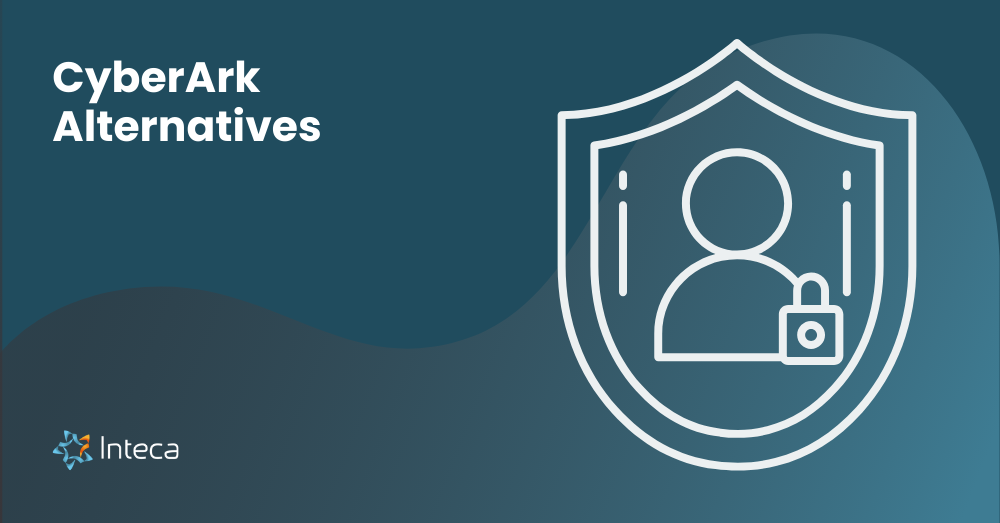CyberArk is one of the most well-known names in privileged access management (PAM) as well as identity and access management (IAM) but as enterprise infrastructure evolves in 2025, many IT teams are considering alternatives to CyberArk. From operational complexity and high licensing fees to SaaS lock-in and rigid integrations, the drawbacks of CyberArk are driving organizations to look for CyberArk competitors that offer secure access, just-in-time access, and granular access control, without the overhead.
In this article, we explore top 6 CyberArk alternatives, including Keycloak, Okta, and Ping Identity, that serve as suitable CyberArk competitors. Whether you manage privileged accounts across IT infrastructure or need better user access management, we’ll help you compare solutions and find the best software for your PAM needs.
What is an IAM service role and how does it relate to PAM?
An IAM service role defines what authorized users can access and which actions they can perform on critical infrastructure or apps. A modern access management platform like Keycloak takes a token-based approach to PAM, rather than relying on traditional PAM features like password vaults.
Instead of storing credentials for privileged accounts, Keycloak grants time-bound access using role-based access control (RBAC) and attribute-based policies. This method reduces the risk of unauthorized access while improving remote access experiences.
By limiting standing privileges and offering granular access, platforms like Keycloak are reshaping what it means to be a privileged access manager in 2025.
What’s needed for an effective IAM and PAM infrastructure?
To securely manage access to critical systems, organizations need a robust mix of:
-
A scalable PAM solution with identity and access management capabilities
-
Support for privileged access security, session monitoring, and audit-ready access logs
-
Dynamic policy enforcement and role-based access
-
Integration with enterprise systems like LDAP, AD, HRIS, and cloud platforms
-
Automation for password management, onboarding, and access effectively provisioned
-
Full visibility into access patterns and insights into privileged behavior
Legacy platforms like CyberArk provide privileged access management, but often come with rigid models, hidden costs, and limited extensibility—fueling the demand for top CyberArk competitors.
IAM & PAM done right: Managed Keycloak example
Keycloak, managed by Inteca, is one of the best CyberArk alternatives for engineering-driven organizations seeking full control and personalization. Unlike CyberArk’s password vault-centric model, Keycloak uses identity tokens and policy-based access to enforce:
-
Secure access to applications via SSO (OIDC, SAML)
-
User access workflows with Adaptive MFA and passwordless logins
-
Time-bound, just-in-time access for privileged users
-
Full control over access rights, session limits, and access scope
-
Hybrid deployment: Kubernetes-native, Red Hat supported, EU-cloud ready
This access management software provides a developer-first, compliance-ready IAM foundation ideal for teams looking to modernize and outsource how they restrict access to sensitive systems without vendor lock-in.
6+ CyberArk alternatives worth considering in 2025
As enterprises explore alternatives to CyberArk, here are some of the notable CyberArk competitors offering different deployment models, features, and security strengths:
1. Inteca’s Managed Keycloak
inteca.com/managed-keycloak
Inteca’s Keycloak service is a Kubernetes-native, Red Hat-aligned platform offering token-based PAM. It enables secure access to resources, integrates with enterprise systems, and supports role-based policies.
Strengths: Full deployment control, GitOps, no per-user pricing, fit’s in in complex IT systems
Considerations: Requires IAM experts support
2. Infisign
infisign.ai
Infisign delivers a modern access management solution centered on seamless integrations, adaptive MFA, and full passwordless authentication. Its workforce and CIAM solutions provide zero-trust security and 6000+ AI-assisted pre-built integrations.
- Strengths: Seamless integrations, adaptive MFA, passwordless login
- Considerations: Requires vault feature for full passwordless support on legacy systems
3. Okta
okta.com
Okta offers a mature access manager platform with SSO, user lifecycle, and password policies. Known for its integrations and cloud-native flexibility, it’s widely used for both workforce and CIAM.
- Strengths: MFA, user provisioning, app directory integrations
- Considerations: App-by-app setup complexity, cost for enterprise plans
4. Ping Identity
pingidentity.com
Ping Identity provides PAM capabilities through adaptive authentication and strong policy orchestration. It supports hybrid IAM with identity federation across on-prem and cloud services.
- Strengths: Zero trust model, open-standard support
- Considerations: Session timeouts, reconnection friction
5. Microsoft Entra ID (Azure AD)
Entra ID is Microsoft’s entry in the access management solutions space, ideal for those heavily invested in Microsoft infrastructure. It offers access control, MFA, and identity federation capabilities.
- Strengths: Centralized dashboard, RBAC integration with Microsoft 365
- Considerations: Difficult for non-technical users; complex customization
6. JumpCloud
jumpcloud.com
JumpCloud is an open directory platform that simplifies identity and access across devices, cloud resources, and applications. It’s geared toward SMBs seeking scalable access security.
- Strengths: Easy offboarding, cloud-first deployment, user control
- Considerations: Script automation limitations, occasional lockouts
7. One Identity
oneidentity.com
One Identity blends PAM with governance, helping organizations manage privileged access, review policies, and meet compliance mandates.
- Strengths: Enterprise audit capabilities, privileged sessions control
- Considerations: UI complexity, slow syncs in large environments
Each tool offers a unique approach to PAM—some emphasize ease of use (Okta, JumpCloud), while others prioritize flexibility and control (Keycloak, Ping). Before choosing a CyberArk alternative, evaluate access management needs, integrations, and compliance obligations.
Keycloak vs. CyberArk: Comparing Access Management Platforms
| Feature | CyberArk | Keycloak (via Inteca) |
|---|---|---|
| PAM Model | Vault-based | Token-based JIT |
| Role-Based Access | Yes | RBAC + ABAC |
| Session Monitoring | Privileged sessions | Session token validation |
| Deployment | SaaS / On-prem | Kubernetes-native, hybrid |
| MFA / Passwordless | Optional add-ons | Built-in options |
| Licensing | Per user/device | No lock-in, infra-based |
This side-by-side comparison shows how Keycloak’s architecture-focused pricing and token-based enforcement serve as a viable PAM alternative to CyberArk in complex, hybrid deployments.
Final Thoughts
CyberArk remains a privileged access manager leader, but 2025 PAM trends favor tools that offer agility, cost transparency, and extensibility. If you’re seeking alternatives that deliver access to specific systems without SaaS limitations, solutions like Inteca’s Managed Keycloak or Ping Identity may offer a better fit.
Whether you’re aiming to monitor access across applications, reduce password vault complexity, or streamline user access management, it’s time to see how CyberArk compares and consider competitors and alternatives to CyberArk that might align with your enterprise’s security vision.





